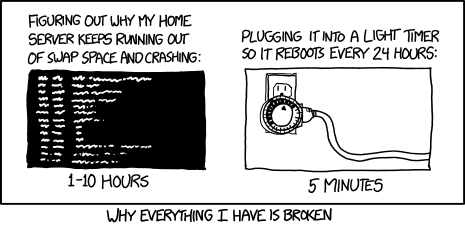Pycon US 2025: This Year Was a Life Changer
Pycon US 2025 WAS Amazing!
There will be a ton of blog posts coming out right about now, gushing about how amazing Pycon US 2025 was. This will be one of them, but I hope to offer something more as well.
Find Ways To Connect. Go Deep
It can be very easy to attend any technical conference, shuffle from talk to talk, try to sponge up as much as your brain will allow. That's not BAD per-se, but if you do this you're missing some of the most potentially impactful benefits of your Pycon experience!
Engage With Talk Authors
Were you inspired by a particular talk? Did it give you an idea for a direction you could take a project you're working on, or maybe an idea for a whole new project?
If you were, reach out to the talk's author! You might even bump into them at the conference, and if you're an extrovert or enjoy meeting new people, introduce yourself and tell them what a great job they did!
But if you don't, or in personal socializing just isn't your jam, get in touch online! Most talk authors will show a slide with their social media contact info, github usernames, and even email. Get in touch! If you're polite and appreciative I can all but guarantee they'll be glad to hear from you, and you might just make a new friend or career connection as a result!
The Talks Were SO Good!
I've been to more than a few technical conferences in my time, and while I've seen some good ones from other conferences, the quality of Pycon talks is in my opinion consistently very high.
The talks are out on Youtube already, so I can link to them directly this year!
- First up, I'm going to give my inner bleeding heart liberal free reign and mention the positively AWESOME keynote from Corey Doctorow. It's truly outstanding and will give you insights into why the internet and big tech are as they are today and how we might be able to fix them.
- Zoom, Enhance: Asyncio's New Introspection Powers doesn't sound like much but core developers Pablo and Yuriy go positively BANANAS in this talk. I won't say more because that would spoil it :) Seriously though, if you're a heavy Async IO user you shouldn't miss this.
- I was incredibly inspired by Paul Ganssle's Programming For Yourself where we learn about how he tried to teach his child perfect pitch. It's beautiful and sweet and says so much about what I value in computing!
- Lynn Root's Keynote (Video not available yet) was amazing. She was SO incredibly brave to make this. It's about her life's journey and how giving herself permission to play cured a severe burnout induced crisis.
- There was also a talk by Pablo on the new remote debugging features in 3.14 but it's not on Youtube yet as near as I can tell. This is my favorite new feature for 3.14!
Sprints - And YOU!
After Pycon's talks are over and the main conference ends, a remarkable thing happens. Many of the open source projects you know and love gather in meeting rooms in the conference venue, mentor new contributors and generally get work done.
Where do YOU come in you might ask? Imagine having the opportunity to contribute to some of your favorite projects while working cheek to jowl with the amazing people who create and maintain them!
I worked on CPython this week, and it was an experience I will never forget!
They had a "First Time CPython Contributor" room this year, which is where I was. I sat beside living legend and this year's PSF Python Programmer In Residence Lukasz Lenga helping him with the swank new REPL Python got in 3.13 and that's greatly improved in 3.14!
I even landed a tiny edge case fix! I still can't believe it. I won't lie, working on CPython was a stretch for me. It's a very complex code base, and yet, here it is. Hearing Lukasz say "Congratulations, You're a CPython Contributor!" made my year :)
It was also such a pleasure sitting with, working along side, and sharing laughs with Lukasz, Pablo, and a cast of others including people whose work I have admired for more than a decade.
All Good Things
I always learn a lot by attending tech conferences. Last year's Pycon left me positively reeling with new information and ideas for directions to take it.
But this year was something entirely different and much, MUCH more valuable. I made friends! The Python community is such an amazingly warm, kind, welcoming place.
I was given a calabash gourd and bombilla (drinking straw) for Mate by a lovely woman from Python Argentina. She'd just met me!
The warmth and genuine connection I made with SO many people defies description so I won't even try. It's like being love bombed in the best possible way.
Now, the conference and sprints are over, and here I sit in my hotel too excited to sleep and also eager to get on the plane, get home and share some of this good mood and love with my wife who bore way more than her share of the load for the week I was gone and couldn't have been more supportive.
If you've never been to a tech conference before and are even vaguely interested in Python, I can't recommend it enough! And if you're already a Pythonista and haven't been, DO IT! You won't regret it!
If you can't afford to come, financial aid is available. Come join us next year!







